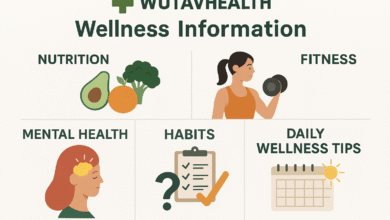Leila Centner: Redefining Wellness and Education Through Holistic Innovation

In the rapidly evolving world of wellness and education, few names resonate as strongly as Leila Centner. Once a rising star in the finance industry, she has transitioned into a visionary force behind transformative educational and health institutions. As the founder of Centner Academy and Centner Wellness, Leila Centner’s personal journey through health challenges inspired a mission that now touches countless lives. Through integrating ancient healing philosophies and modern biohacking technologies, she is crafting a revolutionary path toward holistic well-being and reimagined education.
From Finance to Holistic Health and Education
Leila Centner’s professional journey began traditionally—earning her degree in accounting from the University of Southern California and becoming a certified public accountant. Driven and ambitious, she quickly rose through the corporate ranks to become one of the youngest CFOs at a billion-dollar firm. However, the 2008 financial crisis acted as a pivotal turning point. She launched her own virtual accounting firm and relocated to New York to be with her husband, yet a more personal journey was just beginning.
When searching for suitable schools for her daughter in New York, Leila was disheartened by the lack of holistic, emotionally intelligent educational environments. Determined to provide something better, she laid the foundation for Centner Academy, a school that integrates mindfulness, happiness, and academic excellence—designed not just for learning, but for whole-child development.
A Personal Health Crisis Sparks a Wellness Revolution
Alongside her educational venture, Leila Centner began battling unexplained health issues, including mold exposure, parasites, and Lyme disease. These ailments were misdiagnosed for years, leading to an exhaustive search for answers. Her journey unveiled the shortcomings of conventional medicine in identifying and treating chronic, complex conditions.
This struggle inspired the birth of Centner Wellness, a facility that blends advanced diagnostics, traditional healing methods, and cutting-edge biohacking techniques. Leila Centner didn’t just want to heal herself—she wanted to empower others to take charge of their health through education and access to effective, root-cause-focused therapies.
Making Wellness Accessible for All
One of Leila Centner’s biggest challenges in launching Centner Wellness was balancing accessibility with innovation. Having spent significant amounts of money on her own recovery, she realized such resources were out of reach for many. Her response was to democratize wellness: offering affordable services like infrared saunas, coffee enemas, and home detox protocols.
The approach is simple yet powerful: start with the basics and expand gradually. Whether through a clean diet, proper hydration, or cost-effective detox routines, Centner Wellness meets people where they are, guiding them toward optimal health one step at a time.
The Fusion of Ancient Wisdom and Modern Biohacking
What sets Leila Centner apart is her unique integration of ancient wellness philosophies with modern science. Terms like Rife frequencies, lymphatic drainage, and cellular detoxification—once foreign to her—are now staples in the Centner Wellness model. But more importantly, Leila ensures these concepts are communicated in plain, accessible language.
She firmly believes that the human body has an innate ability to heal itself when given the right support. The center provides therapies that encourage detoxification, immune strength, and cellular rejuvenation—empowering clients to actively participate in their healing journey.
Uplifting Women Through Health and Education
As a female entrepreneur, Leila Centner is deeply committed to empowering women, both within her organization and the broader community. All employees at Centner Academy and Centner Wellness receive complimentary access to health consultations, wellness tools, and supplements—at cost, with no markup. This model has resulted in transformative outcomes among her staff, some of whom have overcome chronic illnesses through the center’s therapies.
This ripple effect not only boosts workplace well-being but also sets an example for students and families. By fostering a culture of health and empowerment, Leila Centner is nurturing a future generation that prioritizes wellness and holistic living.
A Vision Beyond the Clinic: Wellness, Food, and Community
Leila Centner’s vision goes beyond brick-and-mortar wellness centers. She aims to build an ecosystem that combines food, health, and education. During the pandemic, she launched Regener8 Farm, an organic, chemical-free agricultural project that supplies Centner Academy with fresh produce and eggs.
This concept is evolving into Regener8 Farm Cafés, with the first set to open at Aria at the Bay. These cafés will offer nutritious meals sourced from her farm and be paired with wellness centers offering detox services like colonics, infrared therapy, and IV drips. By combining clean eating with health services, Leila is creating holistic spaces where the body and mind can thrive in unison.
Unique Centers for Different Needs
Centner Wellness currently operates two distinct locations, each tailored to meet unique client needs. The Brickell center is a state-of-the-art “biohacking playground,” equipped with advanced technologies for those seeking peak performance, recovery, and cellular optimization.
On the other hand, the Edgewater location serves as a more intimate community wellness hub, focused on core therapies like massage, facials, and digestive health support. Both reflect Leila Centner’s commitment to making health resources available at different price points and accessibility levels.
Expansion is already in progress, with future mini centers planned—each around 5,000 square feet—featuring affordable memberships and community-focused wellness services. A retreat center on the Regener8 Farm is also in the works, offering immersive experiences in wellness, meditation, breathwork, and healthy living.
FAQs about Leila Centner
Q1: Who is Leila Centner?
A: Leila Centner is the founder of Centner Academy and Centner Wellness. She transitioned from a career in finance to become a leader in holistic education and health.
Q2: What inspired Leila Centner to start Centner Wellness?
A: Her personal struggles with chronic health issues, including mold and Lyme disease, led her to develop a wellness center focused on root-cause healing and preventative care.
Q3: What makes Centner Wellness unique?
A: It integrates ancient healing practices with modern biohacking tools, offering clients a comprehensive approach to detoxification, immune support, and cellular health.
Q4: How is Leila Centner contributing to the education sector?
A: Through Centner Academy, she offers a holistic, happiness-centered educational model that nurtures emotional intelligence and well-being.
Q5: What are her future plans for Centner Wellness?
A: She plans to expand with new mini wellness centers, Regener8 Farm Cafés, and a retreat center focused on immersive wellness experiences.
Conclusion
Leila Centner’s journey is one of transformation, resilience, and visionary thinking. From CFO to holistic health advocate and educational reformer, her work exemplifies a powerful blend of personal passion and professional purpose. By bridging the gaps in health and education, Leila Centner continues to inspire a movement grounded in wellness, sustainability, and empowerment—paving a brighter, healthier path for generations to come.



